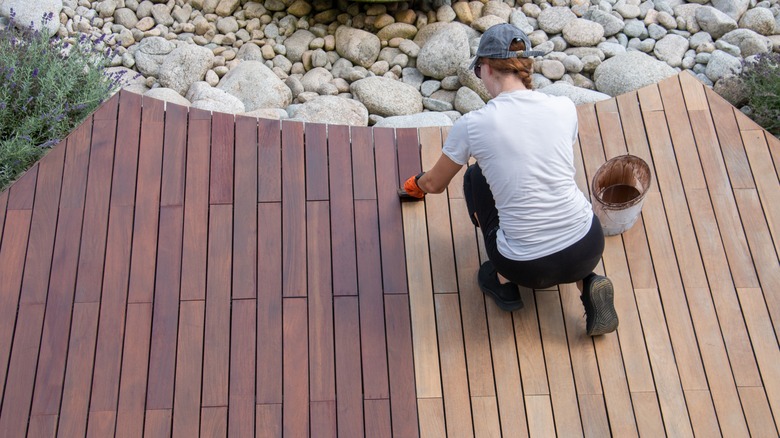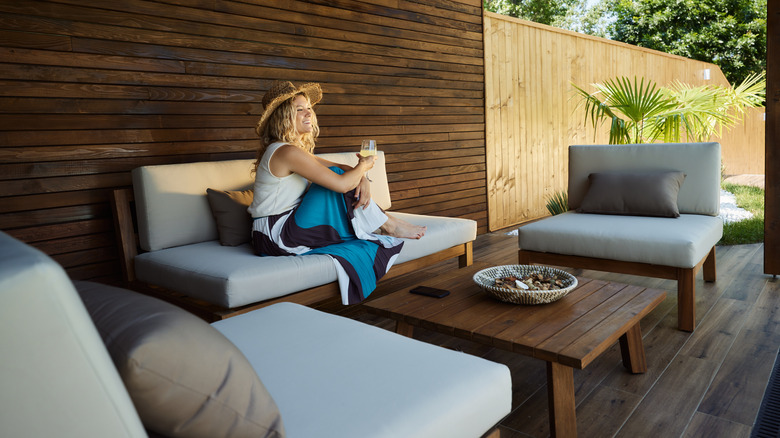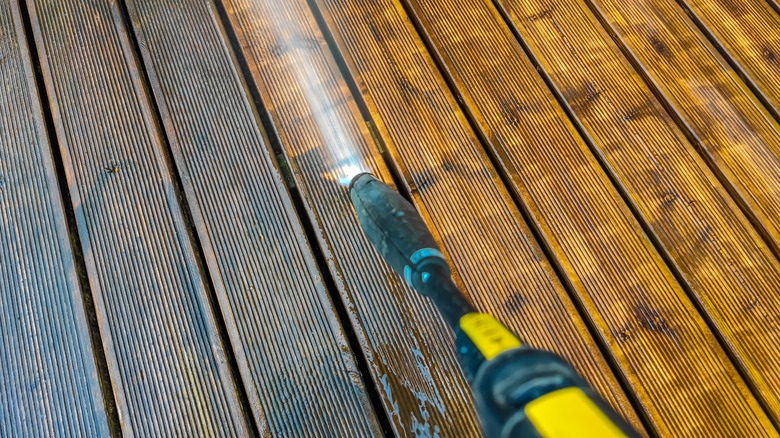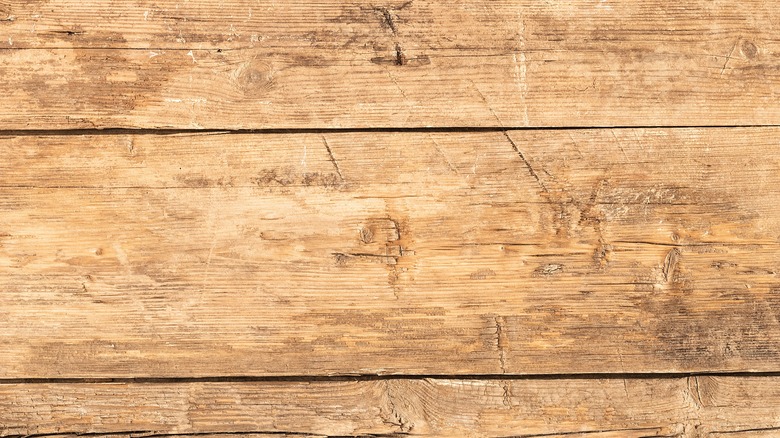Mistakes You're Making When Taking Care Of Your Hardwood Deck
A hardwood deck is a beautiful outdoor update that can add serious value to your home. It offers the perfect green space for relaxation, entertainment, play, and enjoying nature. However, maintaining its beauty and functionality requires regular care and attention, and many homeowners unknowingly make mistakes that can lead to premature wear, damage, and costly repairs, diminishing the aesthetic appeal and the structural integrity of the deck.
Fortunately for you, we're highlighting these common pitfalls and giving you easy and practical advice on how to avoid them. From cleaning practices to preventive measures against physical damage, understanding these aspects of deck maintenance can make a significant difference in the longevity of your deck. Implementing these best practices can extend the life of your hardwood deck and ensure it remains a stunning and durable feature of your home that friends and family can cherish season after season for years to come.
Not sealing the wood properly
Not sealing or treating your hardwood deck regularly can be hugely detrimental to your outdoor space because unsealed wood is highly susceptible to various types of damage. Most notably, if you don't seal your wood deck, moisture can penetrate the wood, leading to swelling, warping, and eventually even wood rot. This is especially problematic in areas with high humidity or frequent rain. However, the opposite is true as well. In sunnier climates, prolonged exposure to UV rays can cause the wood to fade, dry out, and become brittle, which not only diminishes its natural beauty but also compromises its structural integrity.
To protect your hardwood deck from these threats, it is crucial to apply a high-quality sealant regularly. This protective layer acts as a barrier against moisture fluctuations and the sun's radiation, preserving the wood's appearance and durability. Typically, you should treat your deck every one to two years, but this can vary depending on the specific type of wood and climate conditions in your area.
Overloading the deck
Hardwood decks are designed to support a specific weight capacity, and exceeding this limit can be dangerous. If you are placing heavy items such as large planters, hot tubs, or substantial outdoor furniture on your hardwood deck, it is important to be cautious of the weight of each individual item, and how the cumulative weight of all your furnishings is distributed.
Additional weight can put undue stress on the deck's support beams and joists, leading to cracks and potential failure of the decking material. If the weight is distributed unevenly, heavier weights on one side of the deck could cause warping too.
To prevent such issues, always check the manufacturer's guidelines or consult with the installer or a professional to understand the load-bearing capacity of your deck. When adding heavy items, distribute the weight evenly, and consider reinforcing the deck with extra support structures if necessary. By paying attention to the weight distribution and adhering to the recommended limits, you can ensure your deck remains safe, functional, and long-lasting.
Improper cleaning practices
If you don't use your hardwood deck frequently, or you live in a climate with long winters and your deck goes neglected for a large portion of the year, it can be easy to skip regular cleaning. However, this allows dirt, leaves, and other debris to accumulate on your deck. Depending on the nature of the buildup, this can lead to the growth of mold and mildew, eventually causing staining that penetrates the wood. Over time, these issues can make the deck unsightly and compromise its strength and structure. Dirt and debris are one of those sneaky reasons your deck board could crack.
Equally problematic is the use of incorrect cleaning products. For one, harsh chemicals like bleach can strip the natural oils from the wood or break down the lignin, which is a cellular component that holds the wood fibers together. This can lead to dryness, cracking, splintering, and discoloration. Bleach can also damage the fasteners that hold the deck boards together. Another common mistake is being too rough physically when cleaning. A lot of homeowners will use a power washer or a stiff brush for a thorough clean, but applying too high of a pressure, being too abrasive, or using a narrow nozzle in a small area can gouge the wood, damaging it.
Instead, it is best to use a mild soap solution and a soft brush to clean your hardwood deck's surface. In between these washes, regular sweeping to remove debris will also help in the maintenance of your deck.
Neglecting damage checks
If you are out on your deck frequently, you may think that you'd easily notice if there was any damage to it. But it's easy to miss warning signs when you're not mindfully checking for them. Neglecting to check for damage on your hardwood deck can lead to costly damage down the line.
Even small issues, like a loose board, or protruding nails — which are easy to miss if you're not looking for them — may seem trivial at first. But, they can quickly escalate if not addressed promptly. Loose boards can create tripping hazards while protruding nails can cause injuries. Accidentally falling over one or getting your foot caught in them mid-step could cause an entire board to lift, leaving a gap in your deck.
To avoid this, routine examinations of your deck help you catch issues before they become major problems. They can save you from extensive and expensive repairs and ensure the safety and usability of your deck in the long term.
Failing to prevent scratches
Another seemingly trivial issue that can actually have grave long-term consequences is failing to prevent your hardwood deck from getting scratched. When furniture is moved across a deck without proper protection, the legs can scrape against the wood, causing scratches and gouges. This mars the deck's appearance and also damages its finish. With breaks in the finishing, or sealant, the deck's barrier is broken, compromising the underlying wood as it is now exposed to the elements. This makes it more prone to damage from moisture and UV rays.
To prevent this from happening, it is essential to use protective pads under the legs and bottoms of your outdoor furniture. These pads reduce friction and also help to distribute the weight of the object evenly. It is also helpful to lift and carry your furniture to its new location, instead of dragging it across the deck. In the long run, these simple behaviors can protect your deck and keep it beautiful and functional.





